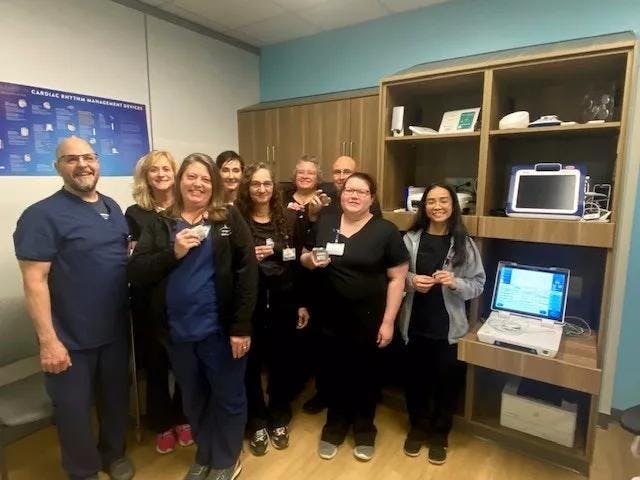About 9,000 WellSpan patients have a crew of experts who oversee and monitor the heart device implanted in their chests.
Whether they have a pacemaker, which helps the heart to beat at a normal rate or rhythm, or an implantable cardioverter-defibrillator (ICD), which can deliver an electric shock to restore a regular heart rhythm, these patients need their devices to function smoothly around the clock.
Their electrophysiologist – a cardiologist who specializes in electrical disturbances of the heart – implants the device.
The WellSpan Device Clinic then helps to ensure that patients understand how their devices work, that the devices are programmed and operating correctly, and that the patients are being monitored for any ongoing issues.
Heart devices are like "super computers" inside a patient's chest, says Mike Silva, a registered nurse who is the manager of the Device Clinic at the WellSpan Heart and Vascular Center in York, the largest clinic of its kind in the WellSpan system. However sometimes they need to be adjusted or reprogrammed to meet a patient's specific health history and daily needs. That individualized attention and focus on detail is what leads to exceptional care by the device clinics across our system.
Here's how the device clinics work.
It starts with the implant
Patients come to the clinic after they receive their implant. Pacemakers and ICDs are the most common type of implant, followed by a small device called an implanted loop recorder that continuously records a patient's heartbeat for up to three years to allow physicians to help diagnose rhythm problems.
The clinics are staffed by a team of registered nurses and technologists – about 30 work in clinics across the WellSpan system. They help to educate patients about their devices, do any necessary programming, and set up the patient to come in for regular monitoring, most often done remotely.
Patients are sent home with a wireless monitor, which usually is kept in a bedroom. That wireless device regularly "interrogates" or checks the device, often while the patient is asleep. The monitor can detect any problems or irregularities and send an alert about needed updates or patient concerns to the device's manufacturer. That company in turn notifies the WellSpan device clinic, so the team can take the appropriate action.
It continues in the clinic
Patients usually come into the clinic if they need to have their device reprogrammed or tested.
Patients also learn what to do if they do not feel well or if the device does certain things. For example, if an ICD delivers a shock to the patient's heart, the patient needs to call the clinic. If it shocks the heart more than once, the patient needs to immediately go to the hospital.
It focuses on the patient
The clinic and the electrophysiologists work together to ensure the device changes with the patient's health. If a patient develops additional needs, the team works to reprogram the device and make sure it is addressing those issues, whenever possible.
A team of specialized nurses manage any device alerts and reach out to patients as needed. WellSpan's team of electrophysiologists – cardiologists who specialize in the electrical function of the heart – oversee and direct the clinic.
To learn more about WellSpan's game-changing heart care, go here.
Tags:

